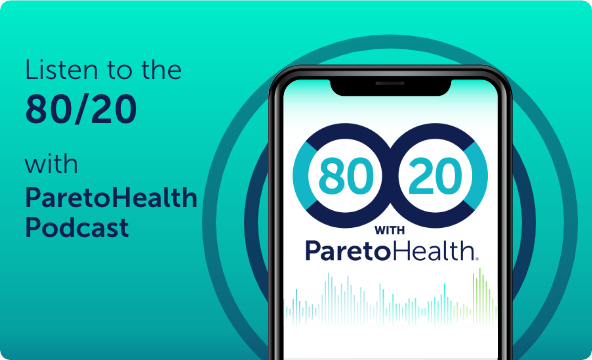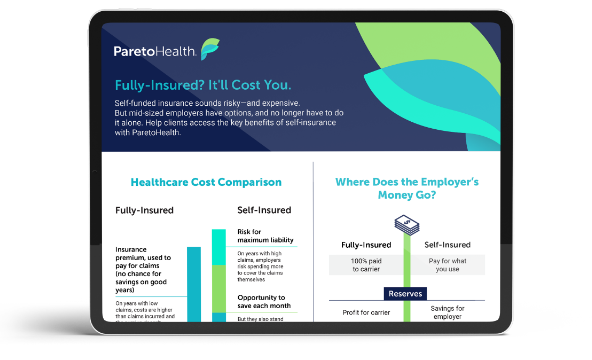What are specific deductibles and aggregate attachment points in stop loss?
With the increasing frequency of high-cost drugs and procedures, self-funding can be daunting. On one hand, you get more control over your claims and only pay what’s incurred. On the other, you can have higher month-to-month volatility depending on the types of claims.
This is where an individual stop-loss policy comes in.
To recap, an individual stop-loss policy is a reinsurance policy available to self-insured groups that provides financial protection against those catastrophic claims that unfortunately come up from time to time.
Now that your refresher is complete, let’s learn about specific deductibles and aggregate attachment points – two critical components of stop-loss coverage.
Specific deductible
Your specific stop-loss policy places an individual specific deductible on every covered member. When a member’s claims exceed this point, the stop-loss carrier pays all claims beyond this amount for the remainder of the policy period.
Individual specific deductible levels vary significantly across groups, ranging from $30,000 to $1,000,000.
Let’s say ABC Company has elected a $50,000 specific deductible. In this scenario, the group is responsible for all claims for each covered plan member, up to $50,000. If a member has over $50,000 in accumulated claims, the stop-loss carrier takes on the financial liability and pays all subsequent claims in the policy period.
Here’s how that might work:
- Member 1 has one claim for a total of $100,000.
- ABC Company is responsible for $50,000, and the stop-loss carrier is responsible for $50,000.
- Member 2 has three claims for a total of $47,000.
- ABC Company is responsible for $47,000, and the stop-loss carrier is responsible for $0 because the accumulated claim total is under $50,000.
- Member 3 has seven claims for a total of $90,000.
- ABC Company is responsible for $50,000, and the stop-loss carrier is responsible for $40,000.
This deductible is set in advance and is an important term of your stop-loss contract (and an essential part of any self-funded plan), protecting the employer from costly claims stemming from any one individual. Groups can select the level that works for them.
Aggregate attachment point
When you purchase an individual stop-loss policy, you also purchase protection from individual large claim hits.
But you’re still responsible for all claims, for every member, up to the individual stop-loss level. These small claims or claims under the individual stop-loss level can quickly add up and sometimes be much higher than initially projected by the carrier.
To combat this, aggregate stop-loss insurance protects self-insured employers from financial losses due to a high volume of unexpected claims in a policy year. This policy provides a cap on your maximum claim liability for the plan year and goes hand in hand with your individual stop-loss policy. For instance, this pattern might occur during a very contagious flu season – more flu means more employee claims.
The aggregate attachment point is the key to protecting you from such high-numbered claims. Serving as the maximum claim liability, this point is determined by adding a risk corridor to the projected, expected claims.
Typically, the risk corridor is 25%.
Let’s suppose the carrier has determined your expected claim liability to be $1 million for the experience period, and you have a 25% risk corridor. Your attachment point would be $1.25 million ($1 million + 25%). In this instance, the most that you, the employer, would pay for all claims under the individual stop-loss level is $1.25 million.
To calculate a company’s aggregate attachment point and risk corridor, several factors must be considered, including:
- An estimated value of claims per month
- The number of enrolled employees
- The estimated costs of claims
One of the most significant benefits of the aggregate attachment point is that it gives you more control over your stop-loss coverage. You can tailor your stop-loss policy to fit your needs and create a budget based on the maximum amount you can cover annually.
Still, it can take time to predict how much your claims will cost.
Typical aggregate stop-loss policies also tend to limit coverage to a maximum of $1,000,000 or $2,000,000. If your claims exceed the aggregate attachment point and coverage limit, you can incur unexpected out-of-pocket costs
There’s a Better Way to Do Employee Health Benefits
Join an upcoming webinar to learn how ParetoHealth turnkey employee health benefits solutions deliver the scale and resources mid-sized businesses need to self-insure with total confidence. By combining a captive model with comprehensive medical and pharmacy cost containment strategies, our members realize significant cost savings with multi-year protection.
 December 1, 2023
December 1, 2023 





